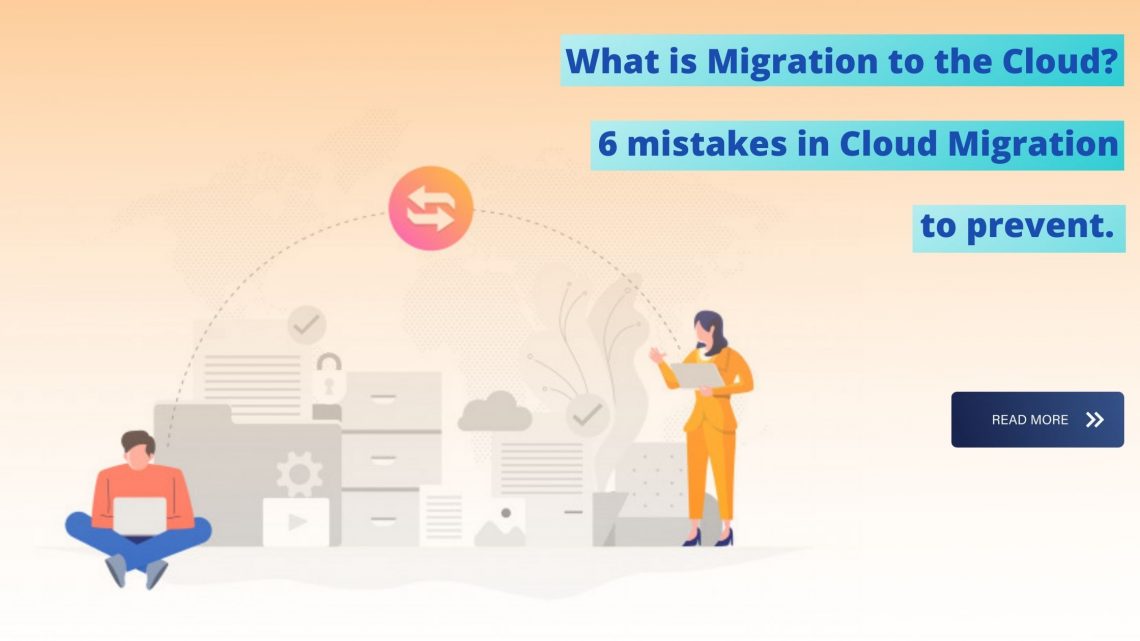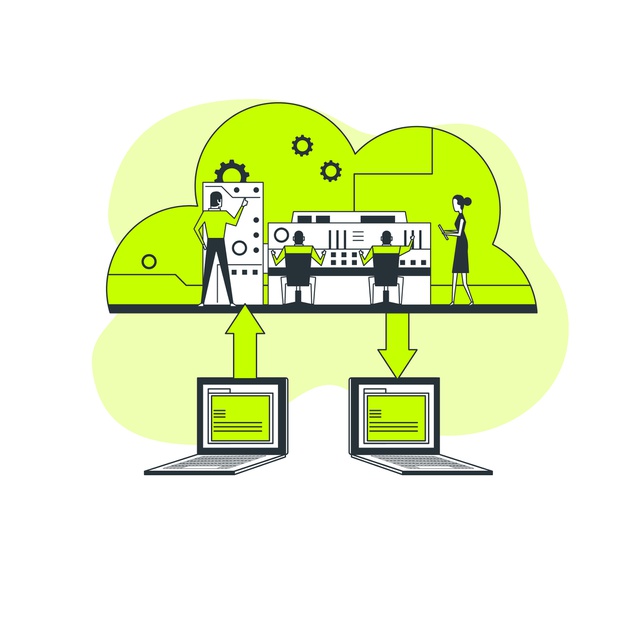
What is Migration to the Cloud? 6 mistakes in cloud migration to prevent
Cloud has emerged as a key component for digital transformation over the last few years. It has been highly beneficial for IT industries. The potential to stand out in any scenario and cost-effectiveness are mainly the key reasons why most businesses are moving to the Cloud.
More than 95% of business enterprises have now embraced Cloud in their work environment, according to a Cloud Survey. Of these, 78% operate with Private Clouds, with gradually utilizing the Hybrid cloud.
As we are seeing growing numbers of businesses switching to Cloud, it is also seen that companies are also suffering from the deployment of cloud errors. One can prevent such mistakes if one learns from them that there are many possibilities for them to develop.
Considering things in mind, this blog will provide you with some common Cloud Migration flaws that are replicated continuously by businesses that also harm their public image in the market.
Before moving let us discuss what cloud migration is.
What is Cloud Migration?
Cloud Migration is a procedure in which organizational software, information, and other business-related factors are transferred from on-site systems or from one cloud to another. This method is called cloud to cloud migration.
Cloud migration process includes merging IT technology from on-site with Hybrid Cloud Solutions that could be operated via the internet. Cloud migration from one or more Cloud providers offers ample storage space, services, and applications as you need.
Cloud migration plays a very important part of achieving performance and effectiveness in real-time. Therefore, detailed evaluation, strategy, and proper execution must be ensured according to your business capabilities and requirement.
Here are some of the frequent mistakes occurring during Cloud Migration. One should avoid these.
1. Not picking the appropriate provider of cloud services
Generally speaking, we have seen businesses under tremendous pressure to put in a range of creative and vital business programs within a defined budget in the fast-growing environment. And they just hastily move into the Cloud and then face adverse consequences later on.
Optimally, you must first research and analyze your IT infrastructure requirement rather than diving into it, and then find an appropriate cloud service provider according to your needs. Your IT specifications would definitely change at some point, so you need to remember that point too.
For example, you begin with the public cloud then because of the versatility and scalability, turn to another model. If you do not initially plan this out at the time of migration, you might end up in a vendor lock-in situation due to annual contract obligations. Thus, in the early phase of the cloud migration cycle, you must evaluate all of these aspects in your mind.
2. Considering Cloud Migration As A Easy Procedure
One of the organizations consistently made cloud migration mistakes is considering this method as a piece of cake. But the reality is that cloud migration is a complex process requiring excellent planning, effective strategy, and careful execution to get the desired outcomes.
Instead of a simple method of upgrading, you have to identify or work on certain applications that fit your organizational requirements. Migrating to the cloud should be regarded as central migration. You must also evaluate the new solution within a defined infrastructural setting before continuing with the final migration process.
3. Shifting resources to Cloud
Most businesses do switching on a huge scale that is not an optimal approach. Security is one of the key factors why sectors such as healthcare and banking may not want to step out completely. However, it is not clear that all programs will be supported by the chosen cloud and this new setting will raise the costs. Before opting for any cloud service make sure to examine and evaluate the business programs.
4. To assume that all clouds are identical
Another misunderstanding made by different organizations when switching their programs and systems to the cloud is to believe that all clouds are identical. Cloud service provider delivers virtual machines and various storage types but the key distinction is in functionality, payment models, and a higher level of network solutions.
Every organization’s needs and specifications are entirely different from each other. First, you need to emphasize important attributes when selecting a Cloud such as its integration with your application specifications, versatility, and intent of scalability.
5. Not equipping the staff with precise training
This one can be considered as a key mistake that businesses make during their migration cycle. Cloud has numerous benefits for your business, but these advantages will not be applied as per the set goal unless you grant your employees with proper training on how to drive activities in the cloud.
The cloud system function is different from a typical environment. Initially, you must get the appropriate training of the Cloud module and enforce the same. It will definitely improve the way you operate and you will get results quicker than the previous setting.
6. Do not consider the security aspects
Moving to Cloud often leads to some inconsistent security concerns that don’t match your defined expectations. Anytime you plan to migrate to the cloud, the security criteria should be put on top of your list. It includes user access and authorization security protocols, system setup, network traffic, and device monitoring. These are some of the rigorous security measures that need to be taken before switching to the Cloud.
Conclusion:
Before winding up this article, remember never to rush for Cloud Migration. It could end up leaving you with guilt and regret. Often first examine the needs, infrastructure, and adaptability issues, then step onto the cloud. We all know cloud has become an important component in the IT industry, but before you move to the cloud you have to make things clear around.
Read other related blogs:
-5 major reasons when you should opt for a Fully Managed Servers
–Top 10 Cloud Computing Benefits for CAs and Accountants


